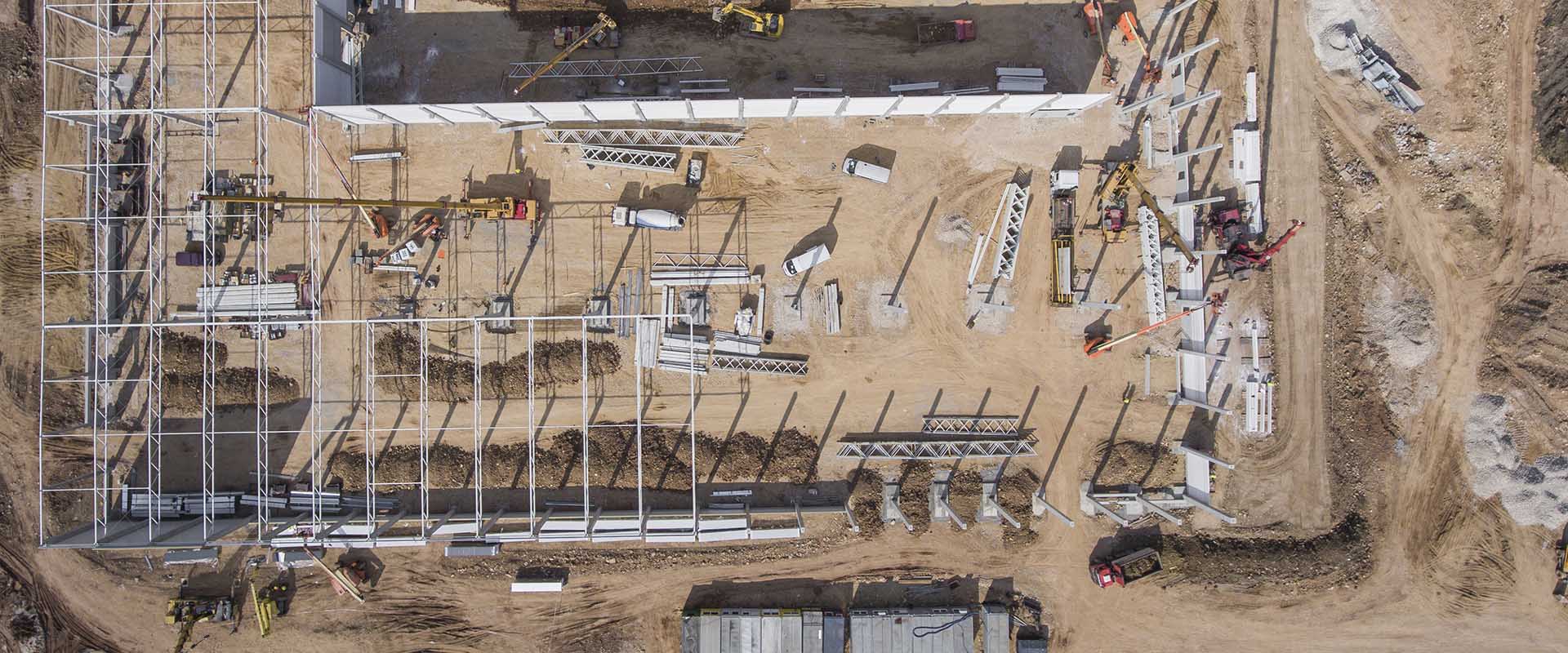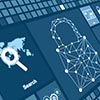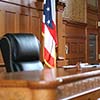Drones: Serving and Disturbing the Public

The Federal Aviation Administration (FAA) estimates that nationwide, ownership of small unmanned aerial systems, better known as drones, will increase from 2.5 million in 2016 to 7 million in 2020. The technology’s benefit to public agencies is enormous: Local public agencies can and do use drones for search and rescue activities, emergency medical response, survey and mapping purposes, student learning and more. But the rising number of drone-related incidents in California and elsewhere illustrates the need for local rules that protect public safety and privacy.
For example, the City of Seattle held a four-day trial in 2017 to prosecute a drone operator for reckless endangerment after a drone flying over a parade fell from the sky and struck and injured two people. A local prohibition on flights over crowds or in certain downtown areas would have eliminated the need for a long, fact-intensive trial and would have allowed the city to make it clear to operators that such conduct was prohibited.
The FAA takes the position that navigable airspace free from inconsistent state and local restrictions is essential to the maintenance of a safe and sound air transportation system, and has warned state and local lawmakers against enacting regulations that may be preempted by federal law. The FAA has traditionally held that its jurisdiction begins about 500 feet above ground. But the rise of drones has led the FAA to assert a more dominant role in the “gray zone” below 500 feet.
In 2016, the FAA released new rules for operators of small, commercial drones that included a rule prohibiting them from flying more than 400 feet above the ground. (Small commercial drones are those weighing 55 pounds or less; the FAA also regulates larger commercial drones, subjecting them to the same regulatory processes as civil aircraft.) Current FAA rules for small commercial drones regulate permissible hours of flight, line-of-sight observation, altitude, operator certification, aircraft registration, and marking and operational limits. But the rules are notably silent about privacy.
Owners of recreational drones were required to register with the FAA until 2017, when a federal circuit court ruled that the FAA Modernization and Reform Act expressly forbade the agency from regulating recreational drones. The court did not rule on whether state and local agencies could fill this regulatory gap.
Despite the uncertainty, state and local governments are stepping forward to fill what they see as holes in the regulatory framework. To address privacy concerns, California lawmakers added Civil Code section 1708.8, subdivision (b), which makes an individual liable for invasion of privacy when they use a device to attempt to capture any type of visual image, sound recording or other physical impression of someone engaging in a personal or familial activity under circumstances in which they had a reasonable expectation of privacy, even if no images were captured or sold. State lawmakers also approved a law prohibiting drone operators from interfering with emergency responders in performance of their duties.
Governor Jerry Brown vetoed other bills that would have made drone operators who fly into the airspace over someone else’s property less than 350 feet off the ground without permission civilly liable for trespass and would have prohibited drones from flying over state parks, schools, and prisons and jails. In his veto messages, Brown expressed concern about the creation of new crimes, the potential for a piecemeal approach to drone regulation, and federal preemption.
Cities are also stepping into the regulatory breach. In 2016, the City of West Hollywood enacted restrictions on drone use that include prohibitions on flying drones within 25 feet of any person other than an operator or their helper, over city parks during city sponsored events without a permit, or within 350 feet of airspace over a school without an administrator’s permission. The city’s rules, which were enacted after a drone crashed into power lines and knocked out power to hundreds of residents, extend to both commercial and recreational drones. Violators could be charged with a misdemeanor.
Local lawmakers may wish to avoid drafting drone-specific rules or restrictions that clearly infringe on the FAA’s regulatory space. The City of Los Angeles withdrew charges against a filmmaker accused of violating its drone restrictions when a drone he was piloting allegedly interfered with efforts to land a police helicopter after his attorney claimed federal law preempted the city’s rules. The filmmaker was subsequently acquitted of charges he operated the drone in a “careless and reckless” manner.
Local public agencies can bridge the regulatory gap by adopting laws traditionally related to local police power, including land use, zoning, trespass and nuisance and applying them to drone use. Cities and counties should consult their legal counsel when considering laws regulating drones, including:
Effective management of drone use will also require monitoring of federal and state law regulating drones to avoid preemption of the local regulatory scheme. Lozano Smith is closely watching the evolution of drone rules and stands ready to help local agencies craft policies that protect public safety and privacy without intruding on federal law.
For example, the City of Seattle held a four-day trial in 2017 to prosecute a drone operator for reckless endangerment after a drone flying over a parade fell from the sky and struck and injured two people. A local prohibition on flights over crowds or in certain downtown areas would have eliminated the need for a long, fact-intensive trial and would have allowed the city to make it clear to operators that such conduct was prohibited.
The FAA takes the position that navigable airspace free from inconsistent state and local restrictions is essential to the maintenance of a safe and sound air transportation system, and has warned state and local lawmakers against enacting regulations that may be preempted by federal law. The FAA has traditionally held that its jurisdiction begins about 500 feet above ground. But the rise of drones has led the FAA to assert a more dominant role in the “gray zone” below 500 feet.
In 2016, the FAA released new rules for operators of small, commercial drones that included a rule prohibiting them from flying more than 400 feet above the ground. (Small commercial drones are those weighing 55 pounds or less; the FAA also regulates larger commercial drones, subjecting them to the same regulatory processes as civil aircraft.) Current FAA rules for small commercial drones regulate permissible hours of flight, line-of-sight observation, altitude, operator certification, aircraft registration, and marking and operational limits. But the rules are notably silent about privacy.
Owners of recreational drones were required to register with the FAA until 2017, when a federal circuit court ruled that the FAA Modernization and Reform Act expressly forbade the agency from regulating recreational drones. The court did not rule on whether state and local agencies could fill this regulatory gap.
Despite the uncertainty, state and local governments are stepping forward to fill what they see as holes in the regulatory framework. To address privacy concerns, California lawmakers added Civil Code section 1708.8, subdivision (b), which makes an individual liable for invasion of privacy when they use a device to attempt to capture any type of visual image, sound recording or other physical impression of someone engaging in a personal or familial activity under circumstances in which they had a reasonable expectation of privacy, even if no images were captured or sold. State lawmakers also approved a law prohibiting drone operators from interfering with emergency responders in performance of their duties.
Governor Jerry Brown vetoed other bills that would have made drone operators who fly into the airspace over someone else’s property less than 350 feet off the ground without permission civilly liable for trespass and would have prohibited drones from flying over state parks, schools, and prisons and jails. In his veto messages, Brown expressed concern about the creation of new crimes, the potential for a piecemeal approach to drone regulation, and federal preemption.
Cities are also stepping into the regulatory breach. In 2016, the City of West Hollywood enacted restrictions on drone use that include prohibitions on flying drones within 25 feet of any person other than an operator or their helper, over city parks during city sponsored events without a permit, or within 350 feet of airspace over a school without an administrator’s permission. The city’s rules, which were enacted after a drone crashed into power lines and knocked out power to hundreds of residents, extend to both commercial and recreational drones. Violators could be charged with a misdemeanor.
Local lawmakers may wish to avoid drafting drone-specific rules or restrictions that clearly infringe on the FAA’s regulatory space. The City of Los Angeles withdrew charges against a filmmaker accused of violating its drone restrictions when a drone he was piloting allegedly interfered with efforts to land a police helicopter after his attorney claimed federal law preempted the city’s rules. The filmmaker was subsequently acquitted of charges he operated the drone in a “careless and reckless” manner.
Local public agencies can bridge the regulatory gap by adopting laws traditionally related to local police power, including land use, zoning, trespass and nuisance and applying them to drone use. Cities and counties should consult their legal counsel when considering laws regulating drones, including:
- Regulating where and when drones can take off and land.
- Prohibiting careless and reckless operations that endanger life or property.
- Creating rules for drone operations during parades, celebrations, and other jurisdiction-wide events.
- Creating rules for drone operations in parks and other recreational areas.
Effective management of drone use will also require monitoring of federal and state law regulating drones to avoid preemption of the local regulatory scheme. Lozano Smith is closely watching the evolution of drone rules and stands ready to help local agencies craft policies that protect public safety and privacy without intruding on federal law.
As the information contained herein is necessarily general, its application to a particular set of facts and circumstances may vary. For this reason, this News Brief does not constitute legal advice. We recommend that you consult with your counsel prior to acting on the information contained herein.






